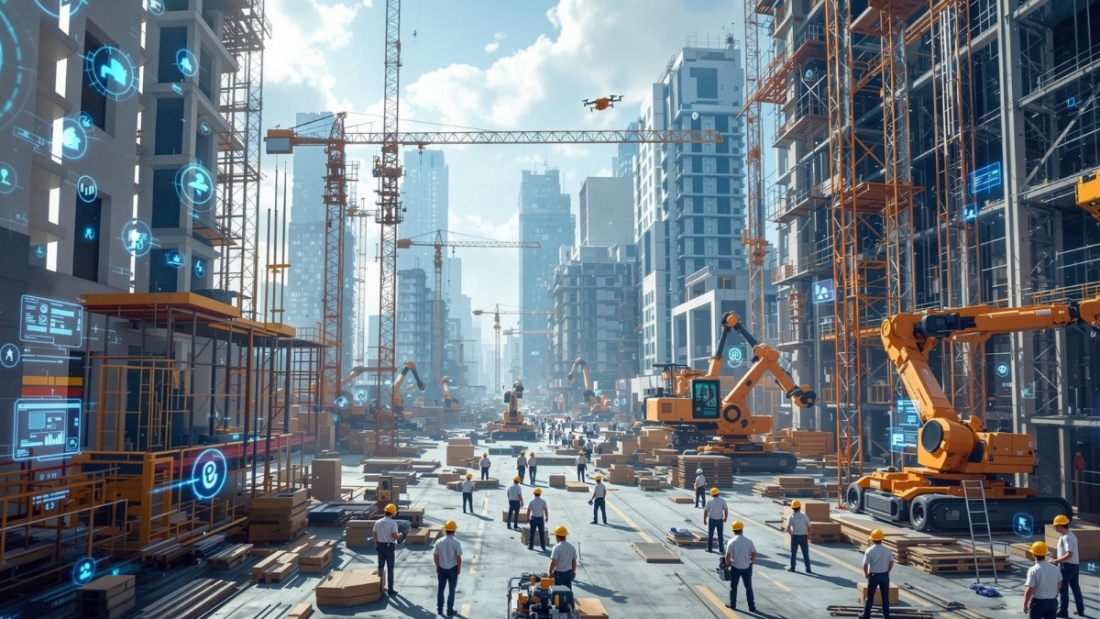Civilization is constructed upon a paradox. While the built environment has always been a manifestation of human ingenuity, the industry responsible for its creation has remained an anomaly of inefficiency, plagued by systemic inertia. Construction is not just slow to evolve—it has been architected to resist evolution. But resistance is no longer a viable strategy.
We are entering an era in which artificial intelligence is not a mere tool, not an enhancement, but a force of ontological rupture. It will not refine construction as we know it; it will unmake and reconstitute it as something entirely new. We are not witnessing an industry shift—we are witnessing an extinction event for firms that fail to grasp the velocity of this transformation. History will not be kind to those who hesitate.
A Fundamental Discontinuity
The introduction of AI into construction represents not an iteration of progress, but an event horizon in economic and operational dynamics. The scale of its impact cannot be overstated, nor can it be postponed. This is not the adoption of a novel methodology; it is the emergence of a wholly distinct form of intelligence that will dictate the winners and annihilate the regressionists.
- AI does not “improve” design—it generates structures with mathematical finality, optimizing for variables human cognition cannot even perceive.
- AI does not “enhance” scheduling—it compresses project timelines with computational omniscience, eliminating inefficiency before it materializes.
- AI does not “assist” in construction—it reconstructs the very framework of how materials, labor, and capital interact, operating at a level of precision that renders traditional project management archaic.
To describe this as a revolution is inadequate. This is a phase shift of intelligence, a moment where the foundational constraints that have defined the industry for millennia—cost, time, labor—are rewritten by a technology that does not think in linear improvements, but in exponential transcendence.
The Death of Traditional Competition
The construction industry has long assumed that its inefficiencies are excusable because they are universal. This assumption is about to become the industry’s epitaph. The firms that integrate AI first will not merely be “better” than their competitors. They will exist in a separate economic and operational stratum. They will operate with asymptotic efficiency, while legacy firms remain trapped in a diminishing spiral of obsolescence. Every day they delay, they do not merely fall behind; they geometrically widen the chasm between themselves and the intelligence-driven vanguard.
This is a divergence, not a race. There will be no “catching up.” The compounding advantage of early AI adoption means that laggards will not be competing on the same field. They will be relegated to irrelevance before they even comprehend what has occurred. By the time the industry awakens to this reality, the early adopters will have amassed institutional knowledge so vast, AI pipelines so refined, and operational intelligence so deeply embedded that their dominance will be unassailable. The firms that failed to act will not be fighting for market share; they will be fighting for survival. And they will lose.
The Inevitability of Asymmetry
The exhilaration of this transformation is undeniable. AI will construct our cities with intelligence rather than brute force. It will end the tyranny of inefficiency, eliminate material waste, and accelerate the timeline of the built environment from years to mere months. The possibilities are staggering.
But with this transformation comes an inescapable responsibility. Intelligence at this scale, if concentrated, risks becoming an instrument of monopolization rather than a catalyst for industry-wide advancement. If the first-movers choose to hoard AI’s capabilities, they will create an irreversible hierarchy, one where access to intelligence defines the limits of economic viability. The question is not whether AI will determine the winners—it already has. The only question that remains is whether this intelligence will be wielded as an instrument of exclusion or as an accelerator of progress.
The Vanishing Window of Action
The era of tentative experimentation is over. The firms that are still treating AI as an exploratory technology are already behind. This is no longer a choice between traditional construction and AI-driven construction. It is a choice between existing in the next century or becoming a footnote of the past. This is not a technological transition. It is an existential one. The future of construction will not be drawn in blueprints—it will be computed in algorithms. The decisions made today will dictate who architects this future and who is consigned to history. The Great Divergence has begun. The choice is no longer whether to embrace AI, but whether one wishes to be among those who build the future—or those who are buried beneath it.



Leave A Comment